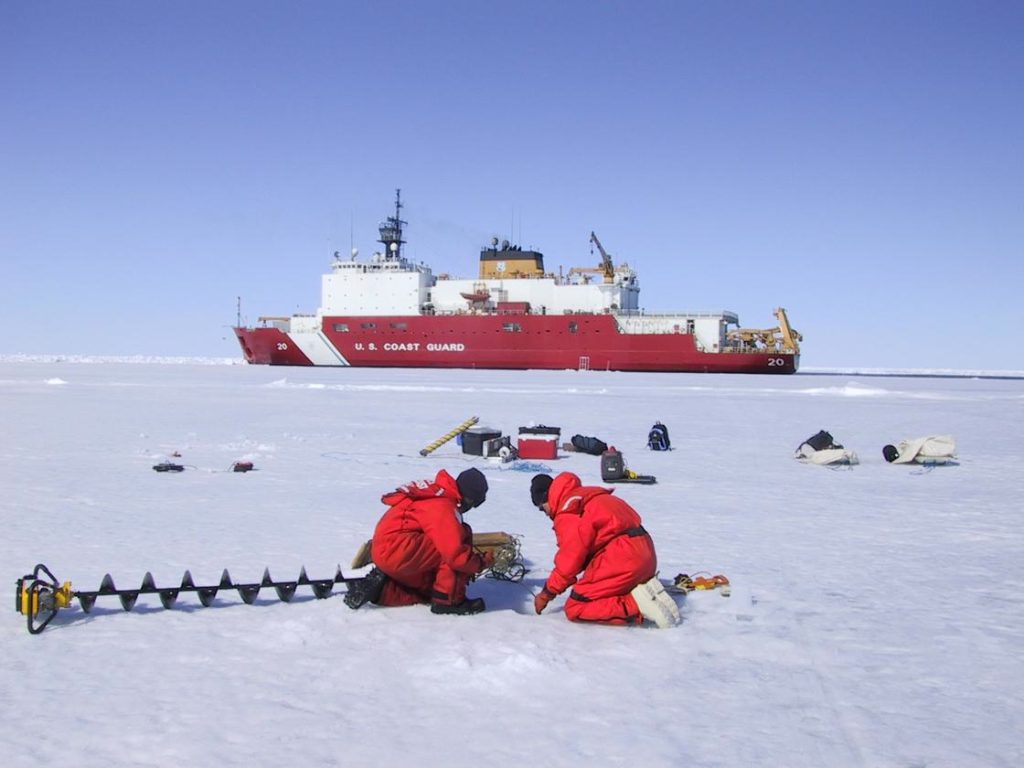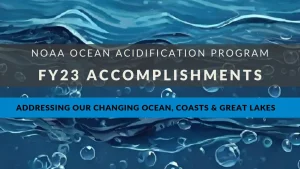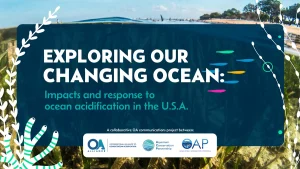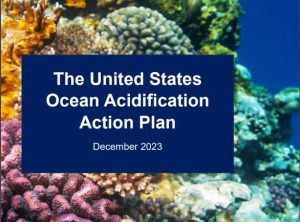NOAA Ocean Acidification Program
Scientists, economists, and stakeholders from all eight Arctic countries forge a path forward in adapting to ocean acidification in the Arctic
Ocean acidification is one of the big changes Arctic communities face. About one third of the rampant carbon dioxide released into the atmosphere is absorbed, like a sponge, by the ocean which increases the acidity of ocean waters. In the cold waters of the Arctic, where acidification is happening more quickly than in other parts of the globe, marine life are especially susceptible.
Arctic indigenous and subsistence fishing communities are particularly vulnerable to changes in marine resource availability as there are often limited cultural or nutritional substitutes. To reduce the vulnerability of indigenous people, scientists, economists, and stakeholders from all eight Arctic countries are working to build a path forward to adapt to ocean acidification.
Ocean acidification is rapidly progressing in the Arctic
In 2013, the Arctic Monitoring Assessment Programme (AMAP) ocean acidification expert group comprehensively evaluated the status and possible consequences of ocean acidification in the Arctic. This led to the first global alert and confirmation that Arctic waters are experiencing widespread and rapid acidification, highlighting that the livelihoods of Arctic communities may be affected.
NOAA researchers have found that waters of northern Alaska, including the Chukchi and Beaufort seas could experience chemical changes by 2030 that threaten the ability of animals to build and maintain skeletons and shells. Just south, in the Bering Sea, the same threshold may be reached by 2044. Acidification affects the development of young Tanner crabs in laboratory experiments, an economically important species in Alaska. If these same effects are seen in their natural habitat, the catches and profits of Tanner crabs can be expected to be half of what they are today within 20 years.
Risk assessments for Alaskan fisheries, which combine our understanding of changing ocean chemistry with biological and economic impacts, show that the regions in southeast and southwest Alaska that are highly reliant on fishery harvests likely face the highest risk from acidification.
Arctic communities rely on marine resources
Arctic communities rely heavily on marine resources for food, spiritual and cultural heritage and livelihoods. The importance of incorporating cultural value into ongoing and future bio-economic models is of paramount concern for Katya Wassillie from the Eskimo Walrus Commission.
“The overall wellbeing of indigenous communities depends on their ability to continue subsistence lifestyles, says Wassillie. “The ability to harvest marine resources is a central component to their culture.”
Jeremy Mathis, Director of NOAA’s Arctic Research Program, has worked on ocean acidification in Alaska for the past decade and knows that adaptation will mean something different to each Arctic community.
“Some sectors of Alaska’s marine economy might be explicitly tied to one fishery,” Mathis explained. “Adaptation to acidification will require forward-thinking and strong partnerships across the Arctic nations.”
A coalition of economists, scientists, and stakeholders forging a path together
In October 2016 NOAA led a Pathways to Adaptation workshop where scientists, economists, and marine resource managers worked together to develop strategies for Arctic populations to adapt to the impacts of ocean acidification. Workshop participant, Lisa Suatoni of the National Resources Defense Council explained, “We know water chemistry is rapidly changing the Arctic. The Pathways to Adaptation workshop joined physical and social scientists together with fishing industry and indigenous community members to begin to identify real steps to address societal vulnerabilities to acidification.”
To bolster adaptation efforts, regional networks can serve as a channel to transfer information to indigenous communities so they have the information to build bottom-up adaptation planning. With support from the Global Ocean Acidification Observing Network, an arctic regional network could serve as a regional hub and promote collaboration and cooperation among scientists, resources users, and stakeholders across international borders.
Within the US, the 2016 launch of the Alaska Ocean Acidification Network is engaging and coordinating with Alaskan communities. The network will connect scientists and stakeholder communities, including native tribes, to identify regional priorities, develop monitoring tools and share data and information. One initiative includes outfitting tribal-managed hatcheries with ocean chemistry monitoring systems to allow tribes to understand and adapt to changing conditions. By developing new ideas and partnerships this region of the Arctic will be better equipped to adapt.
Adaptation in the Arctic
The expansive Arctic is facing many environmental changes and challenges. “Ocean acidification is part of the matrix of the rapidly changing Arctic environment and, for some organisms, may be the straw that breaks the camel's back” said Professor Richard Bellerby, Director of the SKLEC-NIVA Centre for Coastal and Marine Research and co-lead of the AMAP Ocean Acidification working group.
Arctic communities are among the first to experience changes due to warming and acidification, and are the sentinels in adapting to changing conditions. Strategies for dealing with, and adapting to acidification in the Arctic can be applied to other regions of the world as effects take hold in lower latitudes.
Adaptation is a process, not an outcome. Ocean acidification in the Arctic is a challenge that is better tackled with diverse expertise across all Arctic nations. As resources managers, scientists, and Arctic communities continue to gather information, communicate, and work with one another, the pathway to adaptation will be strengthened.






